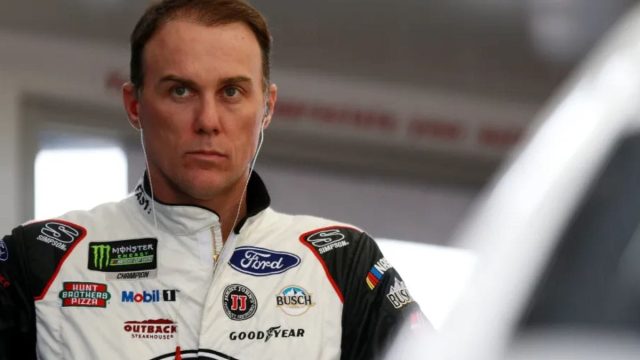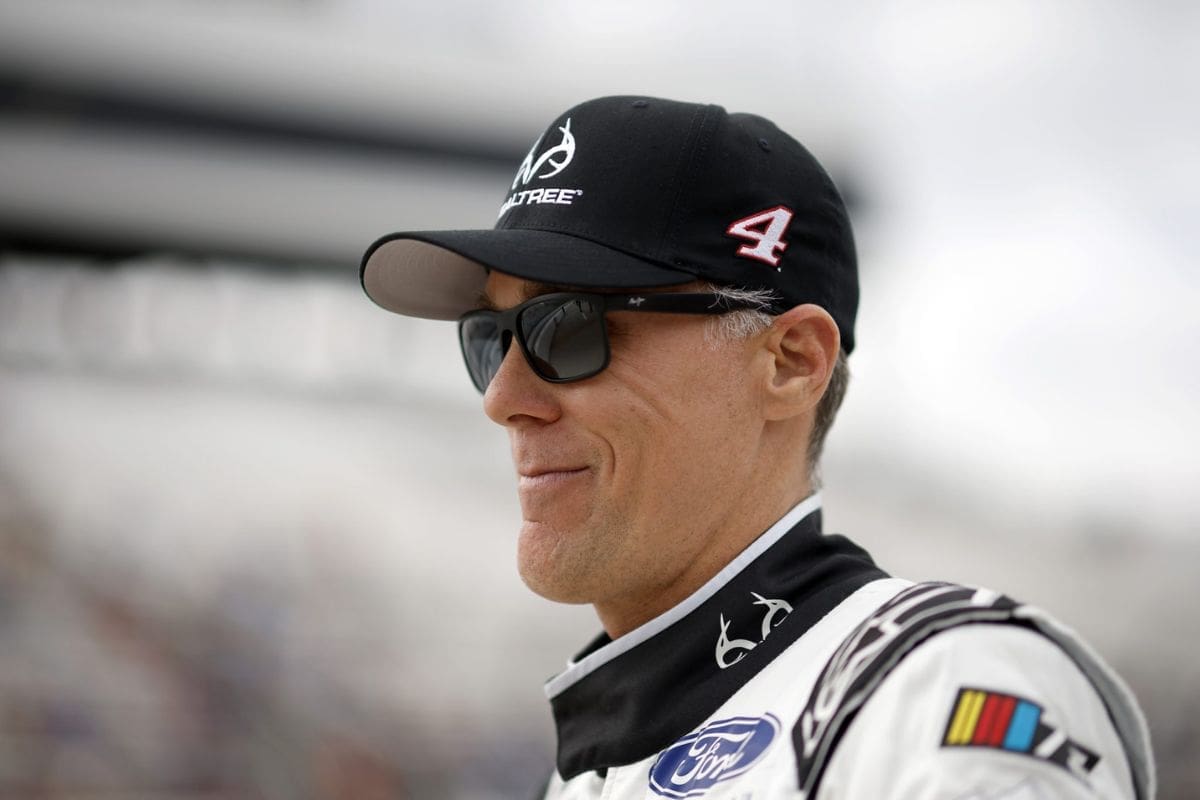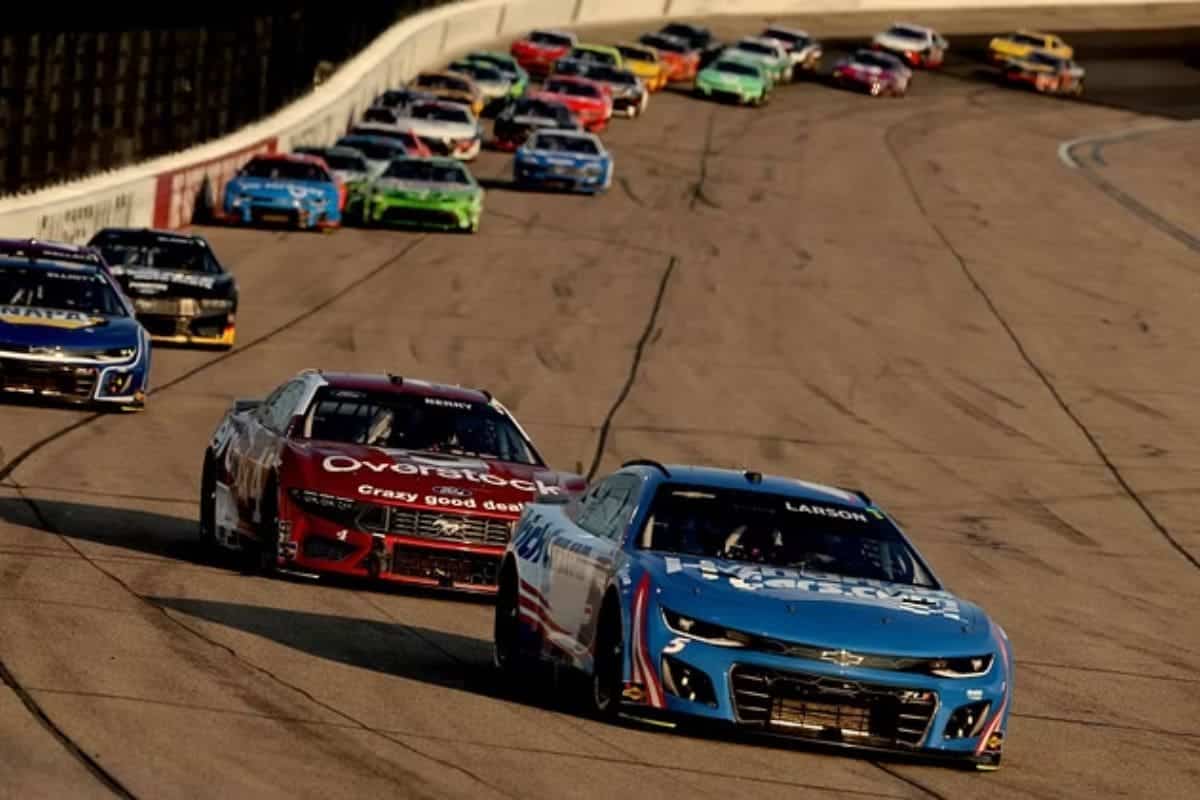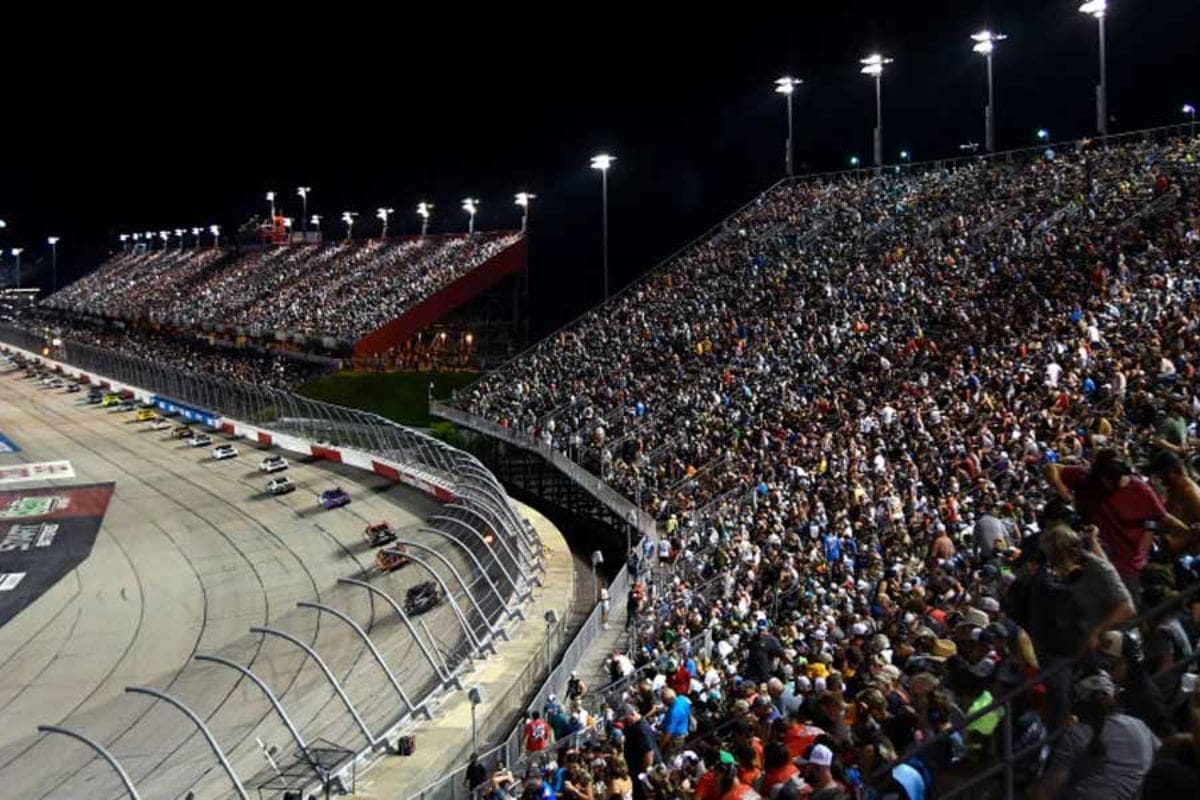Fans Criticize NASCAR Over Iowa Blunder: The recent criticism of NASCAR following Kevin Harvick‘s pointed remarks about NBC’s outdated graphics and the questionable late start time at the Iowa Corn 350 has sparked a broader discussion among fans. Harvick’s concerns highlight the importance of ongoing improvements in broadcast quality and race timing to meet modern standards. As fans voice their discontent, NASCAR now faces a crucial turning point where addressing these issues could greatly impact its reputation and viewer engagement. The question remains: how will NASCAR respond to these fervent criticisms and what measures will be implemented to rectify the perceived blunders?
Key Highlights
- Fans echoed Harvick’s concerns about outdated driver graphics and late start times, demanding improvements for better viewer engagement.
- The Iowa race’s 7:05 p.m. ET start time was criticized for alienating viewers in different time zones and those with early commitments.
- Harvick’s callout highlighted the need for predictable race schedules to enhance the viewing experience and increase television ratings.
- Weather-related disruptions at New Hampshire and other venues exemplify NASCAR’s broader scheduling issues that frustrate fans and teams.
- There’s a demand for NASCAR to invest in better lighting infrastructure and develop contingency plans for adverse weather conditions.
Introduction to NBC’s Coverage and Kevin Harvick’s Concerns
NBC’s half-season coverage of NASCAR commenced with the much-anticipated Cup Series debut in Iowa, but it wasn’t long before Kevin Harvick, currently on hiatus from his FOX broadcasting role, voiced significant concerns. The event marked a notable milestone in NASCAR’s calendar, with fans eagerly tuning in to witness the high-speed action unfold at the Iowa Speedway. Despite the excitement surrounding this debut, certain elements of the broadcast did not escape scrutiny.
NBC’s coverage, while generally well-received, was tainted by slightly outdated driver graphics on-screen, a detail that did not go unnoticed by the discerning audience. These graphical inconsistencies, though minor, detracted from the otherwise polished presentation. Harvick, a seasoned veteran both on the track and in the broadcast booth, found himself particularly perturbed by these lapses. His concerns, however, extended beyond mere aesthetics.
Harvick, who has temporarily stepped away from his role at FOX, did not hesitate to share his insights regarding the broadcast quality and race-day execution. His critique was not aimed at discrediting NBC but rather at highlighting areas that could benefit from refinement. The Closer’s observations were rooted in his extensive experience and passion for the sport, making his feedback all the more valuable.
The debut race in Iowa, while a significant step for NASCAR, served as a reminder of the importance of continual improvement in broadcast standards. Harvick’s vocal concerns emphasize the need for NASCAR and its broadcasting partners to make sure that every detail, no matter how small, meets the high expectations of its dedicated fanbase.
Kevin Harvick’s Critique of Race Timing at Iowa
Kevin Harvick has expressed significant concerns regarding the late start time of the Iowa Corn 350, advocating for earlier race schedules to improve viewer engagement and overall racing experience. Harvick, a seasoned NASCAR driver, emphasized that the race’s 7:05 p.m. ET start time was less than ideal for both fans and participants. The Iowa Corn 350, which lasted nearly three hours, concluded around 10:30 p.m. ET, a time Harvick deemed too late for best viewer participation.
“one beef from sitting (and watching) at home is that the race started too late.”
“I didn’t really know where the USA Network was… I mean my TV didn’t pick it up for me. So I have YouTube TV… So I had to go find the channel. Usually, it just pops up everything that you watch. Apparently, we don’t watch much USA Network in our house.”
“So maybe next week it’ll pick it up for me unless it disappears to Peacock.” – Harvick
Harvick’s critique is rooted in the belief that earlier start times would not only cater to a broader audience but also enrich the race-day atmosphere. Late evening races, according to Harvick, risk alienating a significant portion of the fanbase, particularly those in earlier time zones or with early morning commitments. His perspective highlights a broader concern within the racing community about maximizing fan engagement and ensuring that races are accessible to the widest possible audience.
The 350-lap event, held on the 0.875-mile short track, saw an average speed of 102.874 mph, making the nearly three-hour duration not entirely unexpected. However, the late end time on a weeknight could potentially diminish live viewership and fan experience, which is a critical component of NASCAR’s appeal.
New Hampshire’s Weather and Scheduling Challenges
The constant threat of rain at New Hampshire Motor Speedway highlights the ongoing scheduling challenges faced by NASCAR, complicating efforts to maintain a consistent race calendar. The USA Today 301, scheduled for next Sunday, is poised to confront similar weather-related disruptions that have plagued this venue. The region’s diverse geography often results in unpredictable weather patterns, making it difficult for race organizers to guarantee smooth event execution.
Only last year, the 2023 Crayon 301 was rescheduled due to heavy showers that forced the postponement of the race from its original Sunday, July 16th date to Monday. This rescheduling not only disrupts the rhythm of the racing calendar but also impacts the logistics and planning for teams, fans, and broadcasters. Such unforeseen changes have far-reaching consequences, from ticket sales to television ratings, and they place additional strain on the resources required to manage these events effectively.
Historical precedents further illustrate the persistent challenge. The 2021 Foxwoods Resort Casino 301 at Loudon faced similar weather adversities, resulting in a 10-mile-shortening of the race. Aric Almirola capitalized on the truncated event to secure his final Cup career victory, highlighting how weather can dramatically alter competitive outcomes.
NASCAR’s struggle with weather-related scheduling issues at New Hampshire Motor Speedway exemplifies broader problems within the sport. The need for contingency plans is paramount, yet even the best-laid strategies can be thwarted by nature’s unpredictability.
Reaction to NASCAR’s Rule Changes and Fan Feedback
Revising the rules to address race-ending procedures due to darkness has sparked significant debate among NASCAR fans, with many voicing concerns over the potential impact on race outcomes and the general viewing experience. This discussion was ignited when Bob Pockrass highlighted NASCAR’s new rule, which stipulates that once a predetermined time is reached, the next flag shown will be the white flag, followed by the checkered flag on the subsequent lap, thereby eliminating any chances for overtime. The move aims to preempt the interruptions caused by darkness, as experienced in previous races.
“rule of darkness this year to designate a time the race would end. Once that time is hit, the next flag is the white flag and following lap is checkered with no overtime.” – Bob Pockrass
Fan reactions to this rule change have been polarized, with some appreciating the clarity it brings, while others worry it might detract from the unpredictability and drama that overtime can provide. The timing of the rule’s application is also under scrutiny, particularly regarding races scheduled close to sunset.
Fan Reactions to Rule Changes
Fans supporting the change argue that it bolsters safety and provides a predictable framework for race completion, reducing confusion among both drivers and spectators. They also believe that having a clear endpoint can enrich the strategic elements of racing. However, critics suggest that the fixed end times could lead to anticlimactic outcomes, depriving fans of the thrilling finishes that NASCAR is celebrated for. They also argue that the rule might unfairly impact the race outcome, particularly if a driver holds an advantage that could be negated by the unexpected end.
“sunset for Loudon on Sunday is (projected at) 8:25 pm.”
“You can probably race past sunset if there isn’t a cloud in the sky. And have to stop way before, if it’s surrounded by dark clouds.”
“Wouldn’t need this rule if we had noon/1pm starts.” – fans reaction
These varied reactions highlight the complexity of balancing safety, fairness, and entertainment in NASCAR’s decision-making process.
Future Outlook
Anticipating the future impact of NASCAR’s new rule changes, stakeholders within the racing community are closely assessing how these adjustments may reshape the strategic and operational landscape of the sport. The recent Iowa blunder has highlighted the necessity for more predictable race schedules and improved decision-making protocols. Teams, sponsors, and fans alike are keen to see how NASCAR will address these concerns moving forward.
One critical area of focus is the standardization of race duration. As one fan insightfully pointed out, knowing the exact length of a race in advance could greatly benefit teams. This would eliminate the uncertainty associated with mid-race schedule changes, allowing teams to strategize more effectively and reducing the element of unpredictability that currently plagues race planning. The racing community is hopeful that NASCAR will adopt more rigid guidelines to prevent last-minute alterations that disrupt race strategies.
Moreover, the issue of lighting and race conditions remains a significant concern. In an era where technological advancements are at their peak, it is perplexing that lighting should be a problem. NASCAR must consider creative solutions to ensure that races can proceed smoothly regardless of natural lighting conditions. This could involve investing in better track lighting infrastructure or developing contingency plans for adverse weather conditions.
News in Brief: Fans Criticize NASCAR Over Iowa Blunder
The criticisms articulated by Kevin Harvick and echoed by fans highlight the necessity for NASCAR to modernize its broadcast standards and reassess race scheduling. Addressing these concerns is crucial for enhancing the general viewing experience and maintaining fan engagement.
By implementing improvements in these areas, NASCAR can demonstrate a commitment to adapting to evolving expectations, thereby fostering a more engaging and fan-friendly environment that aligns with contemporary standards in sports entertainment.
ALSO READ: NASCAR Fans Stunned: Iowa Speedway’s Fate Hangs in Balance



